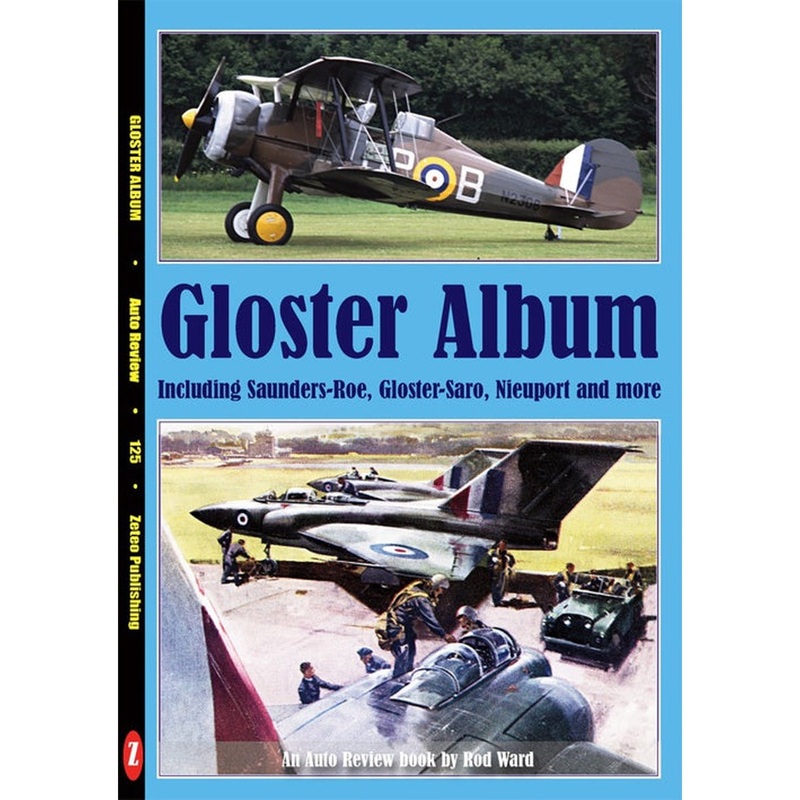
The Gloucestershire Aircraft Co was set up in 1917 to assemble warplanes in the Great War. In 1920 Henry Folland moved to the firm, after the closure of Nieuport & General Aircraft. Henry Phillip Folland began his career at the Royal Aircraft Factory, Farn
The Gloucestershire Aircraft Co was set up in 1917 to assemble warplanes in the Great War. In 1920 Henry Folland moved to the firm, after the closure of Nieuport & General Aircraft. Henry Phillip Folland began his career at the Royal Aircraft Factory, Farnborough in 1912, where he was responsible for the FE.2B, SE.4 and SE.5A. Nieuport & General Aircraft at Cricklewood had been set up in 1916 by Samuel Waring of Waring & Gillow, to licence-build the French Nieuport 17 fighter. When the 1917 Burbidge Report said that Farnborough should cease designing and building aircraft, N&G snapped up Folland, and he designed the Nighthawk fighter. When Waring closed Nieuport & General in 1920, Folland moved to the Gloucestershire Aircraft Co Ltd, taking the Nighthawk design with him. He went on to produce the Bamel racers and Schneider Trophy seaplanes. In 1926 the company name was changed to the Gloster Aircraft Co. Folland designed the famous Gloster single-seater biplane fighters, Grebe, Gamecock, Gauntlet and Gladiator, plus the Gannet ultra-light. In 1934 Gloster was taken over by Hawker, then Hawker merged with J D Siddeley’s empire in the Hawker Siddeley Group. In 1936 Folland left Gloster, to join British Marine Aircraft Co as technical director. BMAC intended to licence-build Sikorsky S-42 flying boats in Hamble. That project collapsed, so Folland acquired the firm and renamed it Folland Aircraft Ltd. In 1939-42 Gloster built Hurricanes for its parent company, Hawker, but in 1940 a contract was awarded to build Britain’s first jet fighter, its engine designed by Frank Whittle. The E.28/39, which first flew in 1941, led to the twin-engined Meteor, the only jet used in combat by the Allies in the Second World War. The delta-wing Javelin of 1952 was the last Gloster aircraft design to be built. At this point we look at Saunders-Roe, formed In 1929, when A V Roe left the Avro aircraft company he had founded and with John Lord he took a controlling interest in the famous Isle of Wight boat-builders S E Saunders (see Auto Review 44: Fast Boats). The firm was renamed Saunders-Roe (Saro) and produced flying boats in the 1930s, combining Sam Saunders’ hull technology with Roe’s aviation expertise. After a number of ill-fated designs, including the enormous Princess flying boat, in 1951 Saro took over the Cierva Autogiro Co and went on to produce the Skeeter helicopter. In 1959 Saro built the SR.N1, the first practical hovercraft, for the NRDC. Also in 1959 Westland took over Saro’s helicopter and hovercraft activities. After the Second World war, Saro had turned its Beaumaris flying boat factory to bus body manufacture. This became very successful, many buses being built there. In later years the plant was used by Cammell Laird to produce refuse collection vehicles, and by MCW for more bus bodies. Laird military vehicles, including the Centaur, were built at Beaumaris, before the plant was acquired by the German Faun concern. Back in Gloucestershire, at the turn of the 1970s Hawker Siddeley Group merged Gloster with Saro, to make fire appliances and tanker bodies. Gloster-Saro was based at the Gloster Hucclecote plant. Most fire appliances were built on Reynolds-Boughton chassis. In 1984 Gloster-Saro acquired Chubb’s fire appliance operation, then in 1987 merged with with Simon Engineering to form Simon Gloster Saro. So in this publication we combine the stories of two pioneering british aircrfat companies with bus and fire appliance manufacture. For publication in 2016 Q4
At Our Store, we aim to deliver your orders as quickly and efficiently as possible. Below you will find everything you need to know about our shipping and delivery process.
Shipping Methods & Rates
We offer a variety of shipping options to meet your needs. The cost of shipping depends on the shipping method you choose, the destination, and the size of your order. Please refer to the shipping options available at checkout for more details.
Express Shipping: Delivery within 3-5 business days (next-day delivery for some locations).
International Shipping: Available to selected countries. Delivery time and shipping fees will vary based on destination.
Processing Time
Orders are typically processed within 1-2 business days from the time your order is placed. Please note that during peak seasons or promotional periods, processing time may be slightly longer.
Tracking Your Order
Once your order has been dispatched, you will receive an email with tracking information so you can monitor the status of your shipment. You can also check the status of your order in your account under “Order History.”
Delivery Times
Estimated delivery times vary depending on your location and the shipping method selected. For international orders, customs processing may cause delays, which are beyond our control.
Domestic Orders: Typically arrive within 3 business days.
International Orders: Delivery times may range from 7 business days, depending on the destination country and customs clearance times.
Lost or Damaged Packages
While we take great care to ensure your items are packaged securely, accidents can happen. If your order arrives damaged or you believe it’s lost, please contact us at customer service email or phone number within 7 days of receiving your package. We will investigate the issue and provide a solution.
Contact Us
If you have any questions or concerns about shipping and delivery, don’t hesitate to contact our customer support team at customer service email or phone number. We’re here to help!
Thank you for shopping! We appreciate your business and strive to provide you with an exceptional shopping experience.
Reviews
There are no reviews yet.